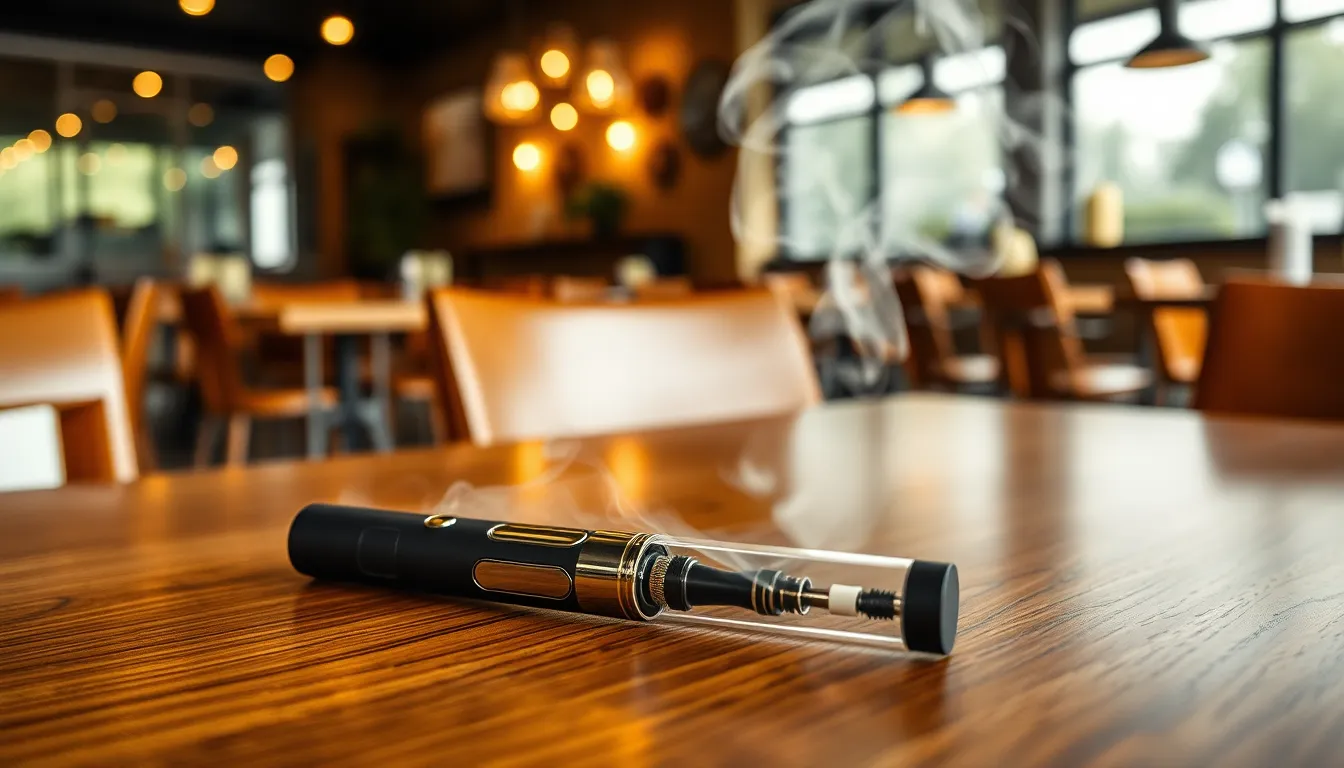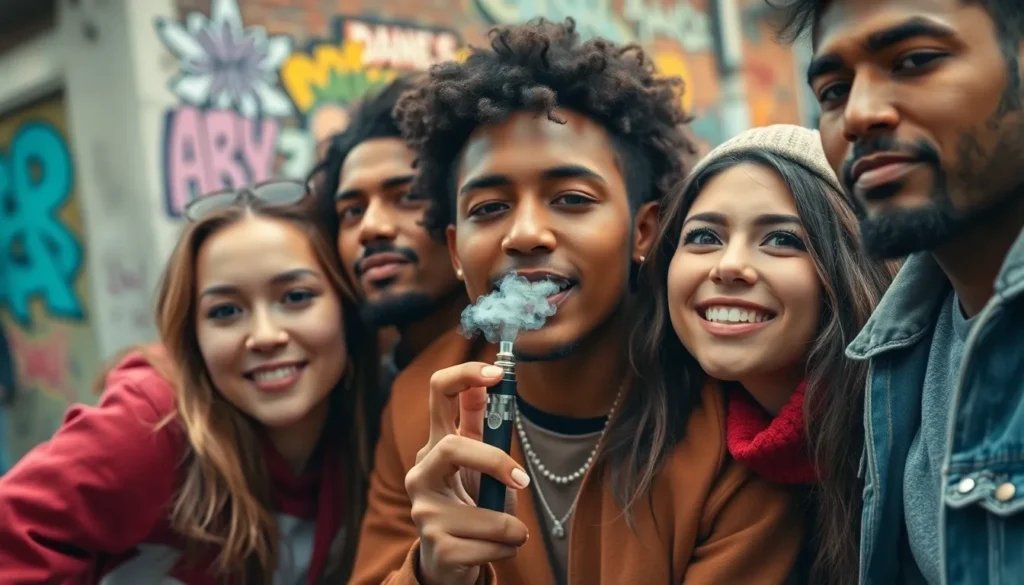The rise of vaping has sparked a heated debate about its classification in relation to tobacco use. As e-cigarettes gain popularity, many wonder whether these devices fall under the same category as traditional tobacco products. Understanding this distinction is crucial, especially for health regulations and personal choices.
Vaping involves inhaling vapor produced by electronic devices, which often contain nicotine derived from tobacco. However, the absence of combustible tobacco leaves in these products raises questions about their classification. This article delves into the nuances of vaping and tobacco use, exploring the implications for public health and individual rights.
Table of Contents
ToggleUnderstanding Vaping
Vaping refers to the act of inhaling vapor produced by electronic devices designed to heat up specific liquids. This practice has gained popularity, especially among younger individuals, as it often serves as an alternative to traditional tobacco products.
What Is Vaping?
Vaping entails using electronic cigarettes or similar devices to transform liquid into aerosol, which is then inhaled. These devices include e-cigarettes, vape pens, and mods. Users typically select various flavors and nicotine concentrations, with some opting for nicotine-free products. The primary purpose of vaping is to deliver nicotine without burning tobacco, which reduces exposure to harmful tar and combustion byproducts found in traditional cigarettes.
Common Ingredients in Vape Products
Vape products frequently contain several key ingredients:
- Propylene Glycol: A common base liquid, propylene glycol is used for its ability to produce vapor and carry flavor.
- Vegetable Glycerin: This thicker liquid contributes to vapor production and enhances the mouthfeel.
- Flavorings: Various food-grade flavorings provide the diverse tastes associated with vaping, ranging from fruit to dessert profiles.
- Nicotine: Typically derived from tobacco plants, nicotine is included in varying levels, catering to users’ preferences for nicotine intake.
Understanding these ingredients is crucial for recognizing the potential health risks and regulatory implications associated with vaping.
The Link Between Vaping and Tobacco

Vaping’s relationship with tobacco remains a contentious topic. Understanding the classification of vaping products in relation to tobacco use requires examining various aspects, including definitions and health implications.
Are E-Cigarettes Tobacco Products?
E-cigarettes often generate debate regarding their status as tobacco products. Legally, in many jurisdictions, e-cigarettes fall under tobacco product regulations due to their nicotine content. The Food and Drug Administration (FDA) classifies e-cigarettes as tobacco products since they typically contain nicotine derived from tobacco plants. While e-cigarettes do not contain combustible tobacco leaves, their nicotine and flavoring components highlight their connection to traditional tobacco products. The classification sometimes leads to regulatory oversight aimed at preventing youth access and ensuring safety standards.
Health Implications of Vaping
Health implications associated with vaping vary and remain under research scrutiny. Studies indicate that while vaping may expose users to fewer harmful chemicals than traditional cigarettes, it is not without risk. Vaping can account for respiratory issues, cardiovascular concerns, and potential addiction to nicotine. Ingredients such as propylene glycol and vegetable glycerin, commonly found in vape liquids, can cause irritation and may lead to adverse health effects. The presence of flavor additives raises additional health concerns, particularly relating to long-term use and their impact on young users. As public health officials continue evaluating these concerns, significant focus remains on vaping as a public health issue connected to tobacco use.
Legal Perspectives on Vaping
Legal perspectives on vaping involve various regulations and age restrictions that inform its classification alongside traditional tobacco products.
Regulations Surrounding Vaping
Regulatory frameworks for vaping differ across jurisdictions, often categorizing e-cigarettes and vape products under tobacco-related laws. The U.S. Food and Drug Administration (FDA) governs the manufacture, distribution, and marketing of these products. The Family Smoking Prevention and Tobacco Control Act gives the FDA authority to regulate nicotine-containing products, which includes e-cigarettes, thereby imposing age verification and product labeling requirements. Some states have implemented stricter laws, including bans on flavored vaping products and increased taxes on e-cigarettes to discourage use among youth.
Age Restrictions and Vaping Laws
Age restrictions on purchasing vaping products align with those for traditional tobacco products. Federal law mandates that individuals must be at least 21 years old to legally purchase vaping devices and e-liquids. Many states, however, have enacted their own laws reinforcing this age limit, with penalties imposed on retailers for non-compliance. Some local jurisdictions have gone further, establishing additional regulations, such as mandatory licensing and specific marketing restrictions aimed at protecting minors from access to vaping products. These measures reflect ongoing efforts to mitigate youth vaping rates and address public health concerns associated with nicotine use.
Public Perception of Vaping
Public perception of vaping significantly influences attitudes toward tobacco use and health regulations. Various studies and cultural representations shape how individuals view vaping compared to traditional tobacco products.
Surveys and Study Findings
Surveys consistently indicate mixed opinions about vaping. The 2021 National Youth Tobacco Survey reported that approximately 19% of high school students used e-cigarettes, reflecting its prevalence among youth. Research by the American Journal of Preventive Medicine found that nearly 60% of adults incorrectly believe vaping poses no health risks. In contrast, 67% of adults recognize that vaping contains nicotine, implying awareness of associated risks. Such disparities highlight ongoing confusion regarding vaping’s safety and its classification as a tobacco product.
Vaping in Pop Culture
Vaping appears prominently in pop culture, influencing public perception and normalization of e-cigarettes. Television shows and films often depict characters vaping, associating it with rebellion and modern lifestyle choices. Popular social media platforms amplify these portrayals, with influencers and celebrities showcasing vaping as trendy. This representation can affect young individuals’ perceptions, making vaping seem more acceptable compared to smoking traditional cigarettes. As celebrities endorse vaping products or share their experiences, they contribute to shaping societal views and accelerating the trend among youth and young adults.
The debate surrounding vaping and its classification as tobacco use continues to evolve. As vaping becomes more prevalent particularly among younger individuals understanding its implications is crucial for informed decision-making. Regulatory frameworks aim to address public health concerns while balancing individual rights.
Public perception plays a significant role in shaping attitudes towards vaping and tobacco use. Misconceptions about safety and health risks persist highlighting the need for ongoing education. As society navigates this complex landscape awareness of the distinctions between vaping and traditional tobacco products will be essential for promoting healthier choices and ensuring effective regulations.






